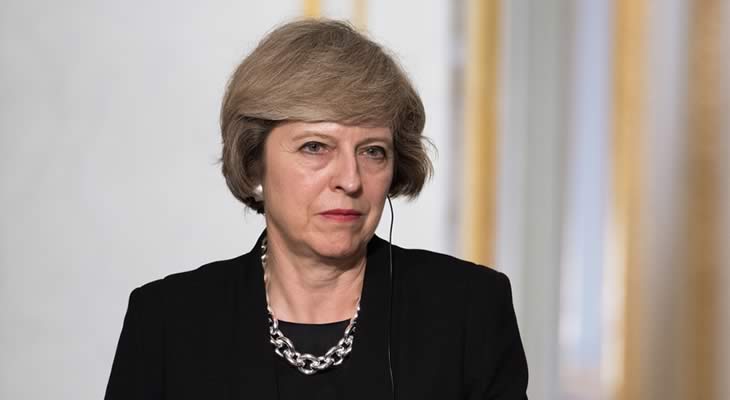Pound to Australian Dollar Exchange Rate Surges on Broad Australian Dollar Weakness
Numerous factors weighed heavily on the Australian Dollar (AUD) last week, making it easier for the Pound Sterling to Australian Dollar (GBP/AUD) exchange rate to surge in recent sessions. However, the pair’s potential for gains is limited as investors anticipate a major UK Parliament vote.
After opening last week at the level of 1.7448, GBP/AUD briefly plummeted around two cents on a brief surge in risk-sentiment and touched an 11-month-low of 1.7217 before recovering strongly later in the week.
While GBP/AUD only recovered to levels last seen in late-November, the pair still recovered around four cents and trended near a weekly high of 1.7722 at the end of the week.
Sterling’s (GBP) movement was limited throughout the week as even further complications built on the horizon for the Brexit process. This left the Pound to Australian Dollar exchange rate to react to the week’s huge shifts in risk-sentiment and US-China trade jitters.
Pound (GBP) Exchange Rates Volatile as Brexit Uncertainties Mount with Mere Months Until Brexit Day
It appears as though even though 2018 is drawing to an end and the formal Brexit day is slowly edging closer, the uncertainties regarding how the Brexit process will unfold are not lightening.
Instead, uncertainties have significantly deepened in the past week. UK Parliament voted to have UK Prime Minister Theresa May’s government held in contempt of Parliament for refusing to publish details of the Brexit legal advice it had been given.
On top of this, Parliament voted for an amendment giving it greater control over the next steps of the Brexit process in the event that May’s deal is blocked in Parliament during an upcoming vote – an outcome that seems likely.
Essentially, the aftermath of Parliament’s Brexit vote on the 11th of December is filled with uncertainties, leaving the Pound limp as investors buy it on softer Brexit hopes and sell it on ‘no-deal Brexit’ fears.
Australian Dollar (AUD) Exchange Rates Driven by US-China Trade Jitters and Weak Australian Data
While hopes of softening US-China trade tensions briefly boosted Australian Dollar (AUD) demand at the beginning of the week, the Australian Dollar was ultimately dragged lower by a combination of weak Australian news and market risk-off movement.
In the middle of the week, hopes that the US and China would de-escalate months of trade tensions were doused, despite an announced tariff truce between the nations, as US President Donald Trump maintained a fiery rhetoric towards China.
On top of this, investors were even less willing to take risks after Huawei’s Chief Financial Officer Meng Wanzhou was arrested in Canada on Thursday. As Huawei is a major global Chinese company, the news worsened already tense US-China relations.
Joseph Capurso, Senior Currency Strategist at the Commonwealth Bank, explained the market’s late-week risk movement:
‘The widespread falls reflect in part concerns about the durability of the US China trade truce,
Canada’s arrest of Huawei’s chief financial officer following a US extradition request reinforces our view that a speedy resolution to US China trade tensions is unlikely in the near term.’
Australian data only made the Australian Dollar even less appealing last week and caused deeper ‘Aussie’ losses. Australia’s anticipated Q3 Gross Domestic Product (GDP) growth rate stats came in much slower than expected.
Pound to Australian Dollar (GBP/AUD) Exchange Rate Could Slump if Brexit Fears Worsen
Next week is likely to be a highly pivotal week for Pound exchange rates. This means that despite a lack of major Australian data on the horizon, the Pound to Australian Dollar (GBP/AUD) exchange rate could still be in for a big shift in movement.
On Tuesday, UK Parliament is still planning to hold an anticipated vote on UK Prime Minister Theresa May’s negotiated UK-EU Brexit deal.
Parliament is widely expected to vote down the bill due to its broad lack of domestic popularity, and this is already priced into Sterling.
What investors will be reacting to is the outcome of the vote, particularly the path the UK government and Parliament takes next on Brexit.
If UK Parliament takes more control over the process, there could be an attempt to renegotiate the Brexit deal or hold some kind of vote, such as a general election or even a second EU referendum.
However, uncertainty is high as any of the potential options has a number of supporters and critics. Either way, how the process unfolds could be significant for the Pound outlook.
As for the Australian Dollar, further US-China trade developments are likely to drive risk-sentiment and the ‘Aussie’.
Upcoming Australian business confidence data and a bulletin from the Reserve Bank of Australia (RBA) may also influence the Pound to Australian Dollar (GBP/AUD) exchange rate.


Comments are closed.